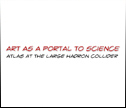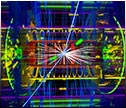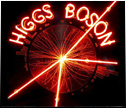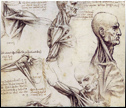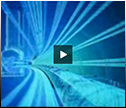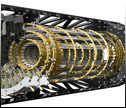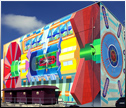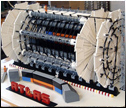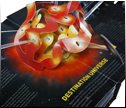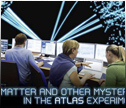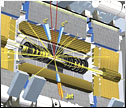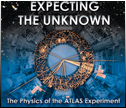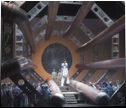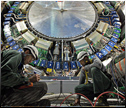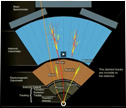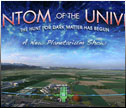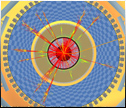Two protons, accelerated to enormous energy in the CERN Large Hadron Collider, collide in the middle of the ATLAS detector. Analysis of the numerous particles produced give clues of what happened in the early universe. Some of the tracks may indicate the production of a new type of particle. (ATLAS Experiment © CERN. Artist: João Pequenão).
Art and science at the Large Hadron Collider
Scientists often find that art is a means to bring new light to their observations.
Artists observe the world through eyes specially attuned to nature; their imagination and creativity bring new light to these observations.
These parallel processes have brought artists and physicists together in multiple ways.
This synergy is particularly true in an experiment at the Large Hadron Collider (LHC) called the ATLAS Experiment. The study of particles emerging from the collisions of protons inside ATLAS is expected to reveal secrets to understanding the nature of our universe. All this happens deep inside an apparatus that is 25 meters tall and twice as long in a huge cavern 100 meters underground.
